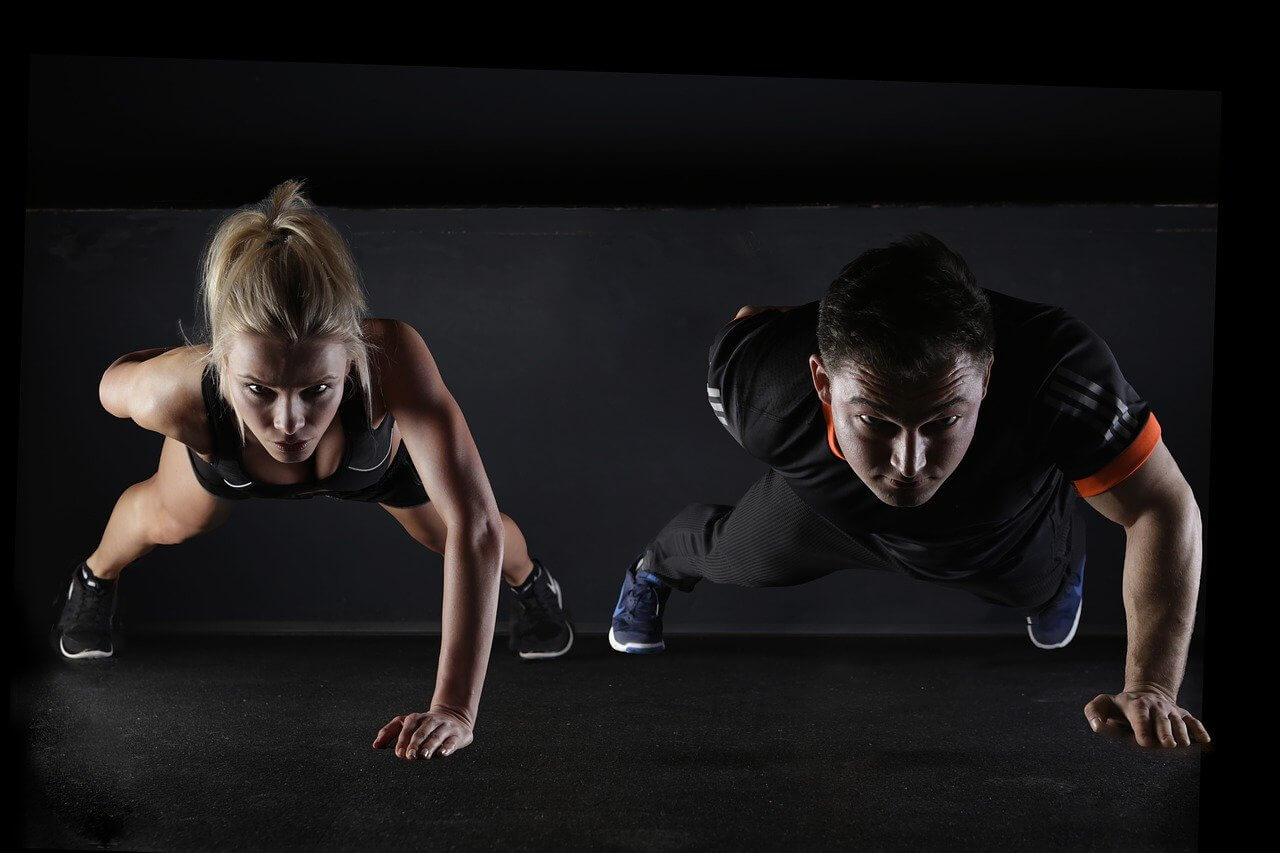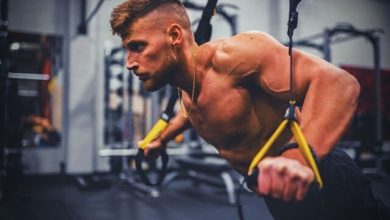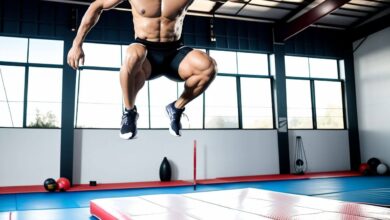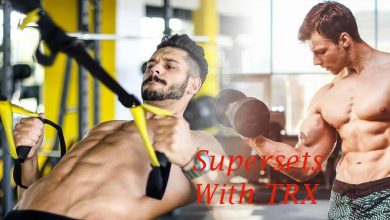Different training systems have different purposes. Some are optimized for mass building, others for enhancing endurance or burning fat. High volume calisthenics is an endurance-oriented training system that can be particularly useful for exercising without equipment.
The training method you choose really boils down to what your goals are, and how you train. If you want to be a bodybuilder then maybe not because of the lack of resistance in high volume training. On the other hand, high volume bodyweight workouts can help increase functional lean muscle mass when paired with proper nutrition and supplementation for maximum results!
In this blog post, we will discuss whether or not high-volume calisthenics.
Table of Contents
What Is High Volume Calisthenics?
The primary reason to use high volume calisthenics is that you can’t add weight to a pure bodyweight exercise. The term “High Volume Calisthenic Training” also includes high volume weight-less push ups, pull ups, sit ups etc., using your own body as a weight if you prefer it that way.
High volume calisthenics workout regime is a way to stress muscles without adding weights. It will give you more strength and stamina.
Volume as a resistance training device is an important concept. In high volume workouts, you use high reps (15-25 reps) and many sets (4-5).
High volume calisthenics workouts also include cardio exercises such as running/sprinting and sports such as basketball etc.
Can High Volume Training Build Muscle?
High volume calisthenics training will certainly give you more endurance and strength than normal workouts but it will never build muscle like high intensity resistance training.
You need some form of body weight or resistance to stress the muscles enough so that they adapt into bigger, stronger muscles. If you are working out to build muscle and strength you should be using challenging weights (or your own weight) so that you can progress.
Even so, some muscle-building methods such as German Volume Training are high volume routines that efficiently stimulate hypertrophy.
Training at a suitable rep range is crucial for hypertrophy with bodyweight or weights. When you train to increase muscle size, the key is to use weights which are challenging enough for it to be an overload on your body. If you use 1–5 reps (3-5 sets) it will probably be insufficient for significant muscle growth as well. Training with 1–5 reps is good for improving muscular strength but not size.
Muscle-building calisthenics workout plans are the best way to develop your physique in a natural way.
Plateau in Bodyweight Exercises
The main reason for plateau on bodyweight exercises is the lack of tension on the muscles (your own weight sometimes doesn’t provide enough resistance and you don’t overload your muscles). You can add weights to make it more intense or switch to a calisthenics workout regime with higher volume.
On the other hand, by adding sets and reps as the primary method of overload, there is a higher risk that you will overtrain. The more sets and reps you do, the more difficult it becomes.
Volume vs. Intensity in Bodyweight Exercises
Depending on the type of the training, Volume of the training can be measured by the duration of a training session or by the number of sets and reps in a session.
In hybrid exercises such as circuit training, volume of the exercise involves both duration and number of repetitions.
If you do high volume high rep bodyweight exercise, you will definitely increase endurance but it will never build muscular size like high intensity calisthenics/resistance training. However, the volume is important for both hypertrophy and muscle endurance.
How to Increase Intensity in Bodyweight Exercises.
Intensity is measured either by the amount of resistance you endure during the exercise or by the pace of the exercise, such as in running.
Changing the tempo of the exercise, i.e. time under tension and rest intervals in resistance training, is another way to increase intensity.
Benefits of High Volume Calisthenics
- High-volume calisthenics will increase your all-around strength and stamina.
- You can switch to high volume calisthenics when plateau occurs in bodyweight exercises. Advanced trainees periodically switch to high-volume exercises to prevent stagnation and continue their muscle growth.
- High rep calisthenics workouts are particularly good for cardio training and for building endurance. It also enhances cardiovascular endurance.
- High rep calisthenics is helpful for beginners. It takes time until they adapt to the exercise and learn its proper form. So, using high reps calisthenics in the beginning allows them to become prepared for the main workouts.
- The high volume bodyweight training works best for people who are either unable to use weights due to some health reason like high blood pressure, heart problem etc. or simply are too busy to go to the gym.
- High volume calisthenics will increase your metabolic rate. This will help to burn fat and maintain lean muscle.

Do I Have to Practice Calisthenics for High Volumes?
No, you can use whatever method you want. Even mixed workouts are fine. Take marathon runners for example. They run for hours and achieve amazing endurance and stamina (and even some muscle) but it doesn’t mean that we can train like them and become marathon runners. They possess the optimum genes for long-distance running, which is why high-volume training works much better for them than high intensity.
Disadvantages of High Volume Calisthenics Workout
- Fulfilling many reps and sets will take a long time for a single exercise session.
- High volume training will increase your endurance and stamina but not necessarily muscle size (hypertrophy). It will improve your body composition though, i.e. make you leaner by reducing fat percentage in the body.
- Sometimes you may lose some muscles than gain.
People who practice endurance sports such as long-distance running, swimming or cycling may achieve a better result using high volume training, but it doesn’t mean that everyone has to train like a marathon runner. There are different genes and optimum programs for each type of sport.
If your goal is fitness, it is better to use high-intensity exercises. In the long term of practice, you have to increase intensity of exercise if you want to achieve noticeable results in hypertrophy and strength gain.
High Volume Calisthenics for Bigger Muscles Such as Chest and Legs.
If you want to build your chest and legs, the high volume calisthenics workout will not be of great help, but it will certainly make them stronger and more defined.
You can practice bodyweight exercises for high numbers of sets and reps especially if you are a beginner. In this case, it is better to focus on strength-endurance rather than on muscle size.
Intense high volume workouts will lead to overtraining and after a while, you will stop gaining strength and size in your muscles.
That is why you have to switch from high volume training to moderate or low volume workouts.
High Volume Calisthenics for Legs: How Many Reps and Sets per Workout?
Heavy strength-endurance training will make your muscles more defined but it won’t increase their size.
For legs, you can do around 3-4 sets of 20-100 reps. If you are a beginner do not train for more than 50 reps per set and practice maximum 3 sets per workout. For experienced athletes, up to 100 reps can be performed preferably in 10+ rep-ranges because this will improve your strength endurance the most.
If you want to gain leg muscle, then do not practice endurance reps above 20 per set and only do 1-2 sets per workout (3 sets max).
The best examples of high volume calisthenics for hypertrophy are the pyramid workouts where you would start with low reps and then increase the number every set (6,8,10,12, etc.).
How Do I Plan My High Repetition Calisthenics Workout?
You should start with the minimum number of exercises.
Choose first one exercise for arms, then another one for chest and shoulders, third one for legs and so on. You have to do each workout at least twice per week because each muscle group needs 48 hours recovery time after intense training.
It is better to have a day off between workouts. In this way, you will increase your workout capacity and be able to perform more sets per workout.
It is not necessary to train 2-3 times per day because your muscles need time for recovery even if it feels like you can do more. Don’t forget about nutrition too!
Progressive Overload in Calisthenics and Different Ways to Create it.
Enhancement of physical features in exercise is through progressive overload. Progressive overload is when you increase weight/ resistance, frequency, time, or number of repetitions in your workout routine. Your musculoskeletal system will try to adapt to the new conditions and as a result, athletic improvement will happen.
High Volume v.s. Low Volume Calisthenics
There Are Many Ways for Making Progressive Overload:
The following methods are common in both bodyweight exercises and traditional weight training.
- Adding repetitions.
- Increasing resistance with weight.
- Increasing the frequency of workouts per week/ month etc.
- Increasing exercise duration and number of sets.
- Adding exercises for the same muscle group.
- Extending the time of each rep or reducing rest interval.
Different Types of Progressive Overload in Bodyweight Exercises.
The following methods are specifically used to create bodyweight progressive overload.
- Increasing time under tension
- Unilateral training
- Adjusting the amount of resistance by changing leverage (or distance from pivot)
- Changing weight or resistance
Coordination and Flexibility with Bodyweight Workout
For flexibility, concentrate on dynamic stretching (e.g. forward slow bends, backward slow bends etc.,) instead of static stretching (e.g. plow pose, upward bow pose etc.). Eccentric bodyweight exercises can be well merged with stretching to combine flexibility and strength in one movement.
The Cambridge Dictionary defines coordination as the ability to move limbs in a proper and controlled way. It is one of the main factors in physical fitness that involves awareness of limb and body position in integration of relative parts during the movement.
To increase coordination, concentrate on practicing exercises in a slower pace while being aware of your muscles effort required for each exercise.
If you have problems with posture, do exercises that will help you to correct your bad habits (e.g., handstands).
For coordination improvement, do some basic exercises like one-handed push-ups, or handstands. Especially TRX exercises are suitable for this purpose.
Some exercises such as hand stand push-ups, one arm pull-ups etc., may not be suitable for beginners. It is advisable to first learn some basic calisthenics skills such as chin-ups and push-ups before attempting these advanced exercises.
Possible Mistakes when Practicing Bodyweight Calisthenics?
There are 2 major errors made by beginners when they start doing bodyweight exercises.
The first one is that they forget about warming up before training and cooling down after the training. This mistake takes place because beginners are too excited to start the workout and don’t feel any tension in their muscles before training.
As a result, it increases the risk of injury. To prevent this from happening, warm up with jumping jacks before starting your workout and do some easy exercises at the end of the training.
The second mistake is that they don’t pay enough attention to their diet even though it has huge importance in muscle building process. A healthy diet is the key to development!
Conclusion
You may be asking yourself, what type of workout should I do? That depends on your goals! If you are looking to maintain lean muscle mass while gaining some size in specific areas, high volume calisthenics can provide the best results. If you are trying to build more muscle and get stronger overall, then high intensity exercises will help with that goal.




